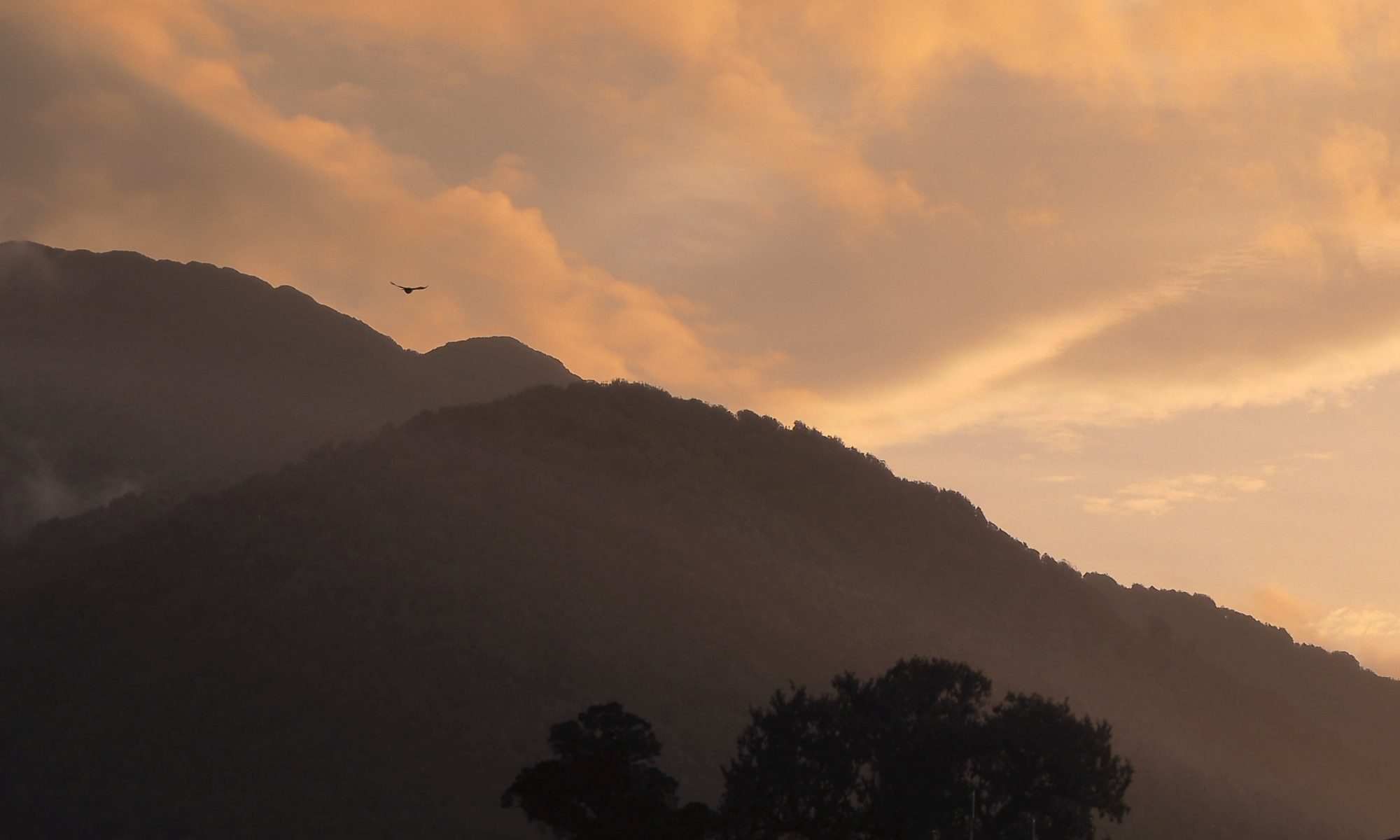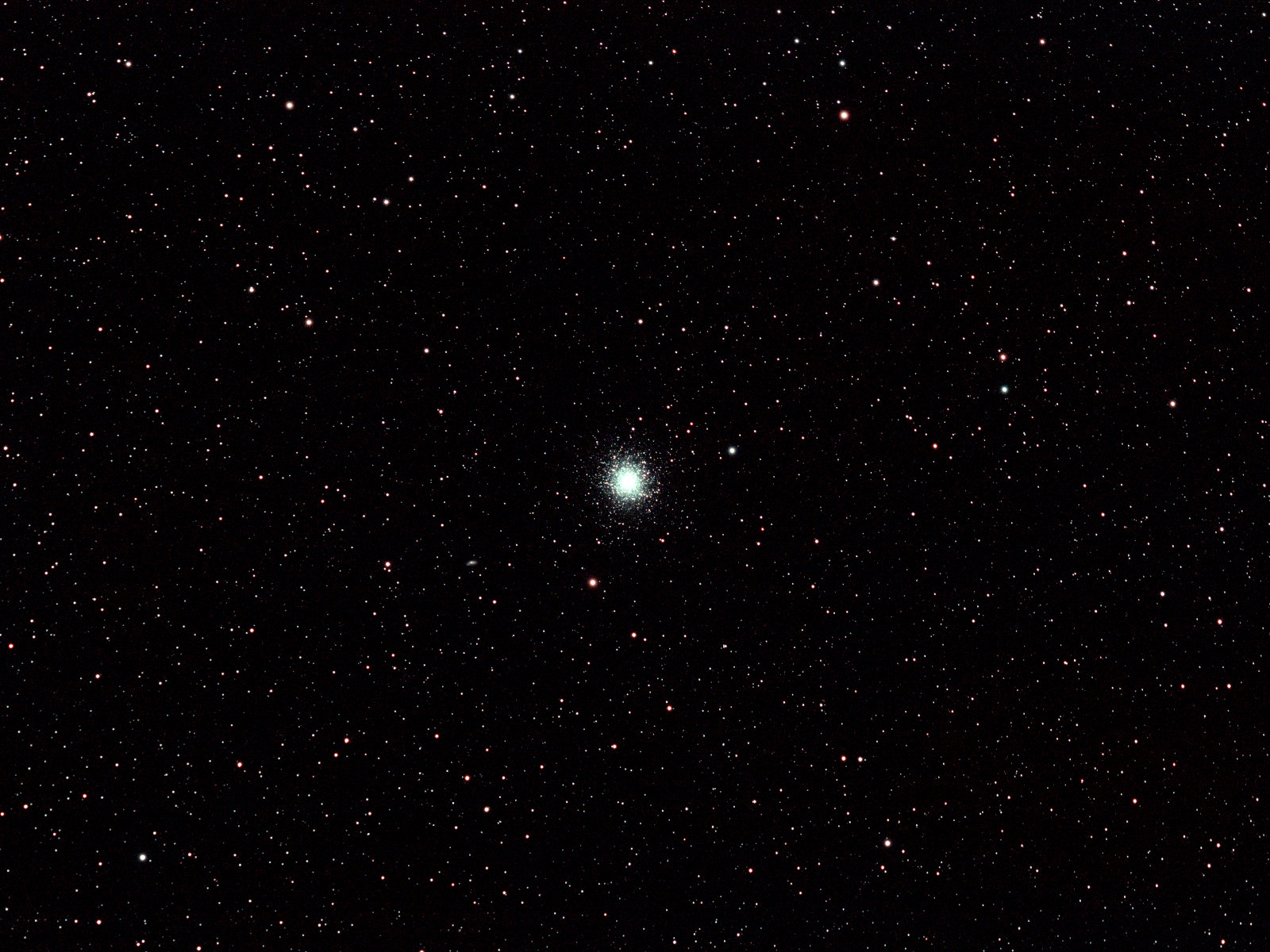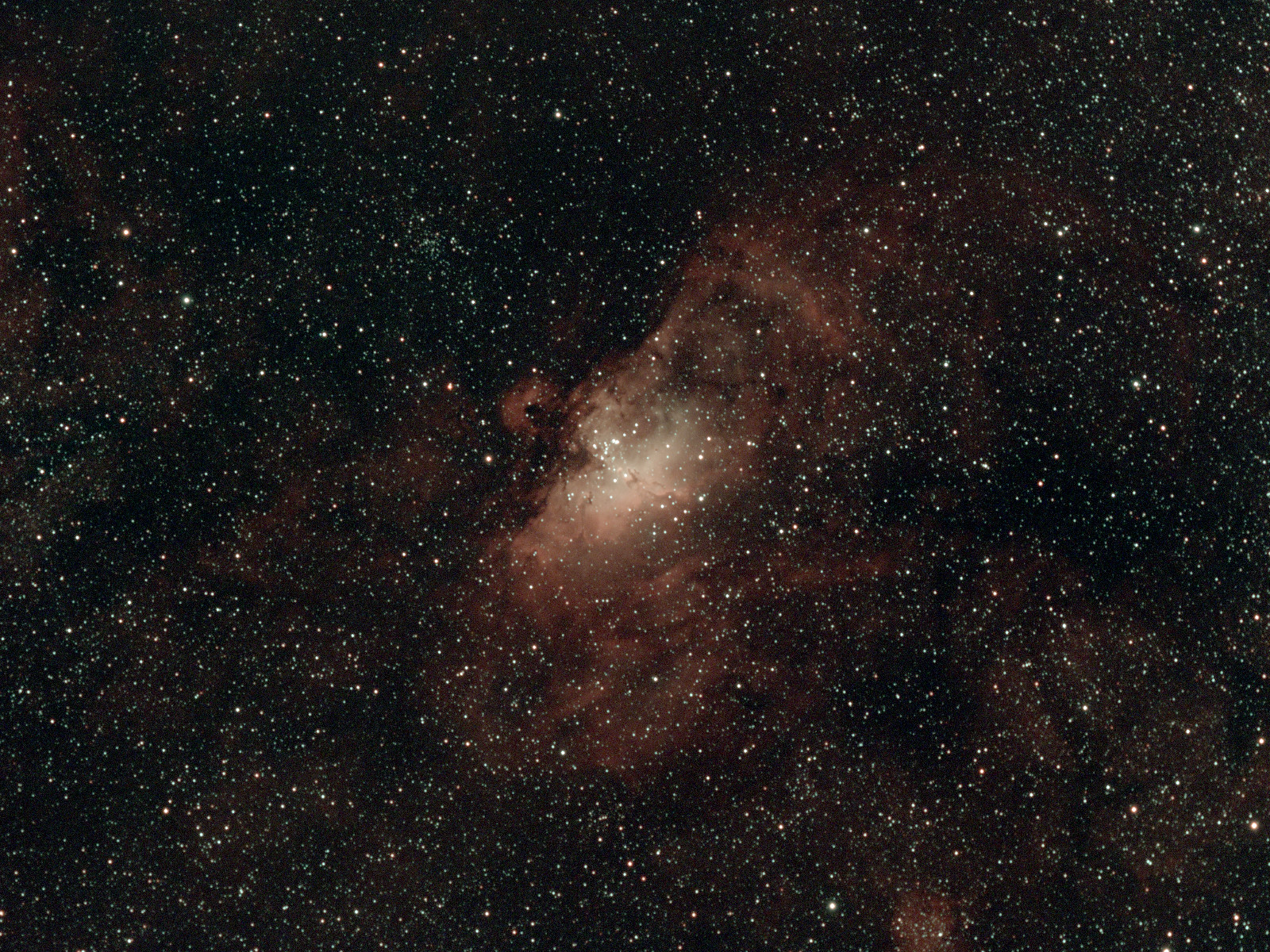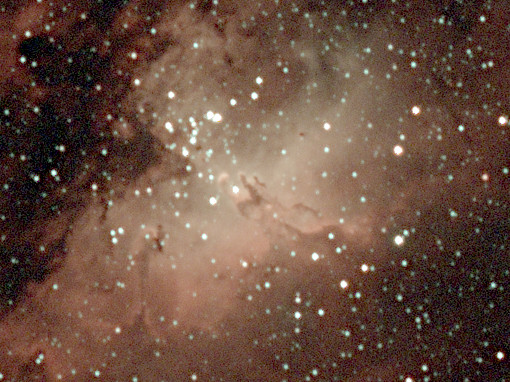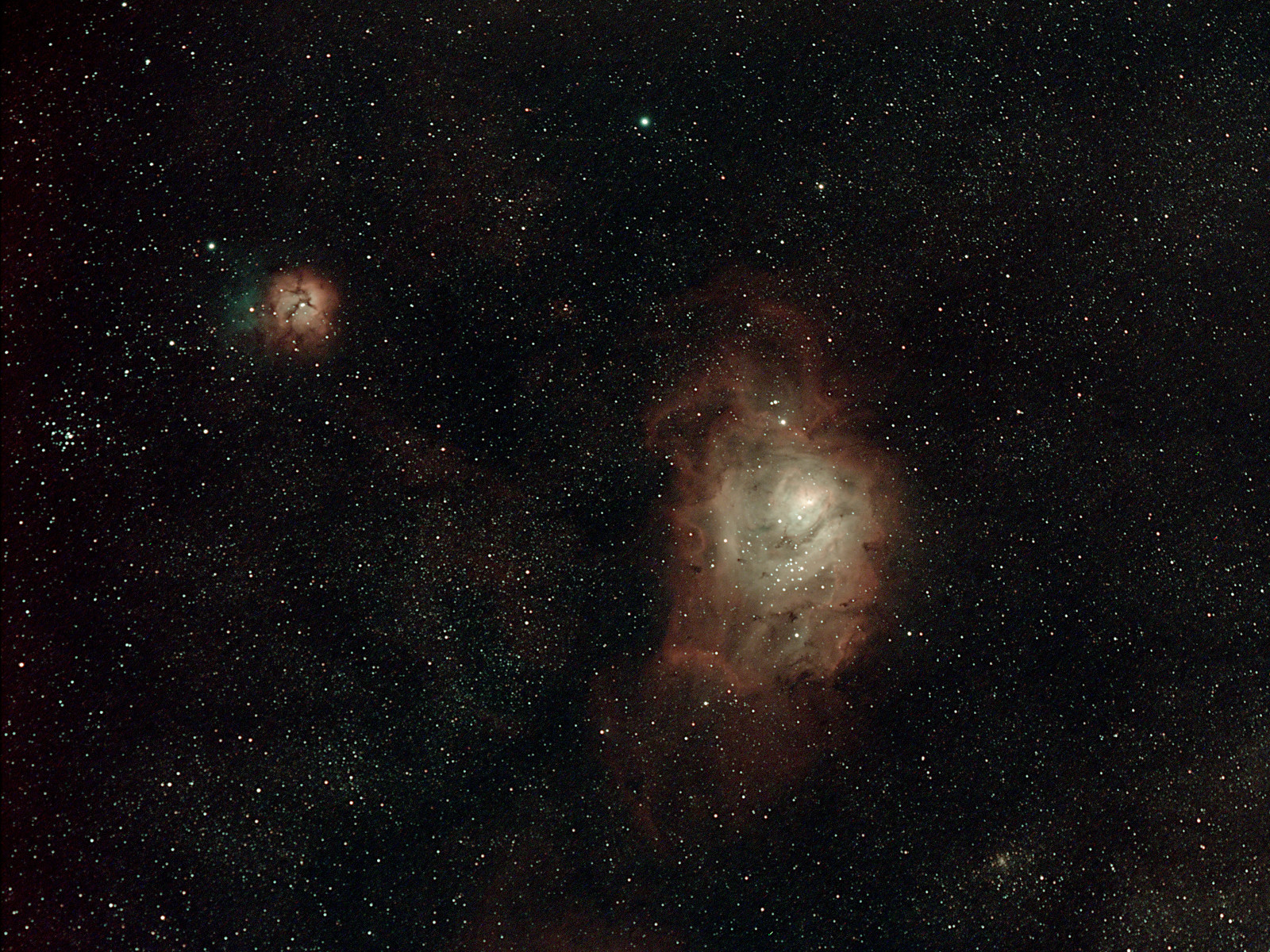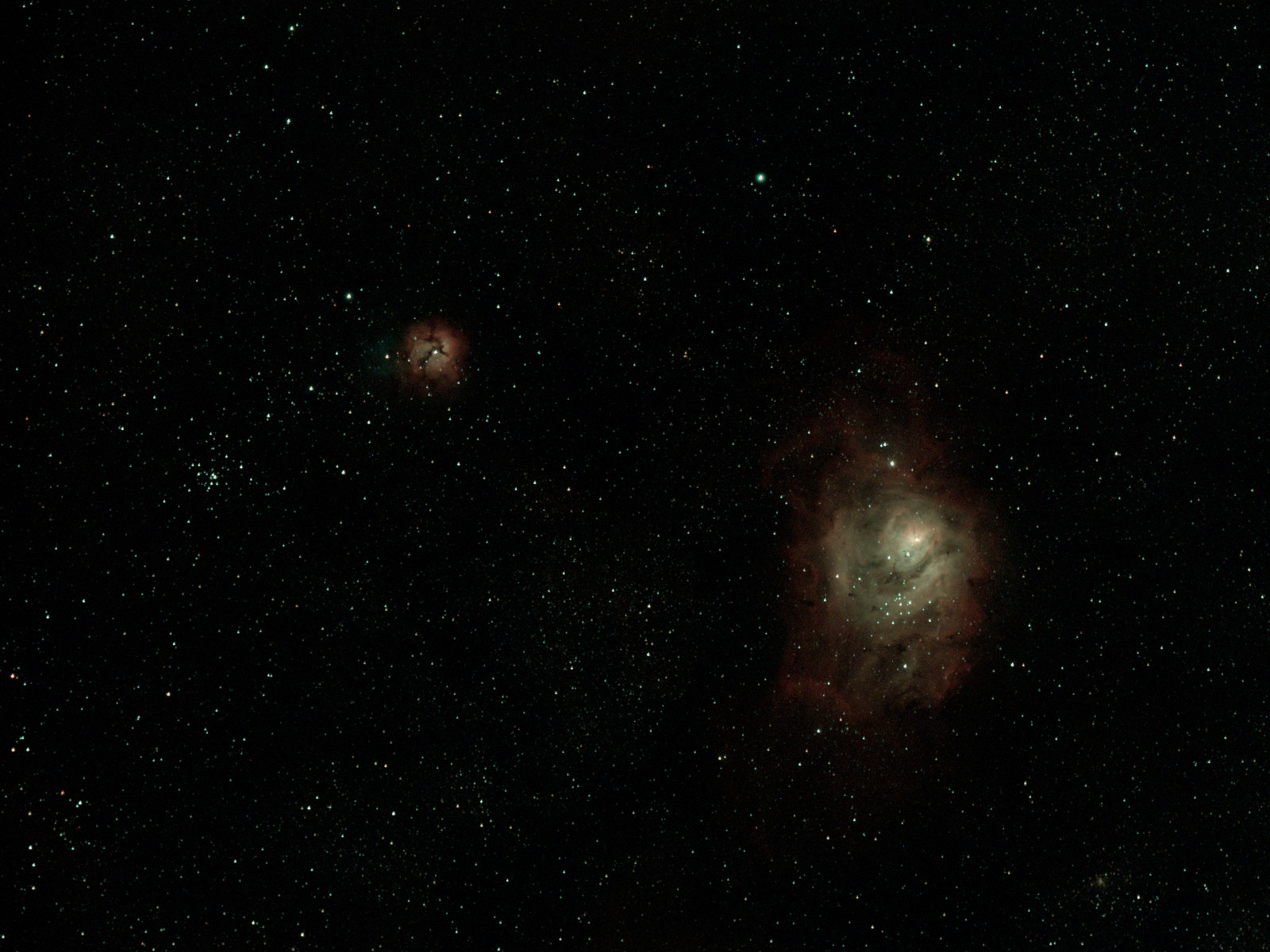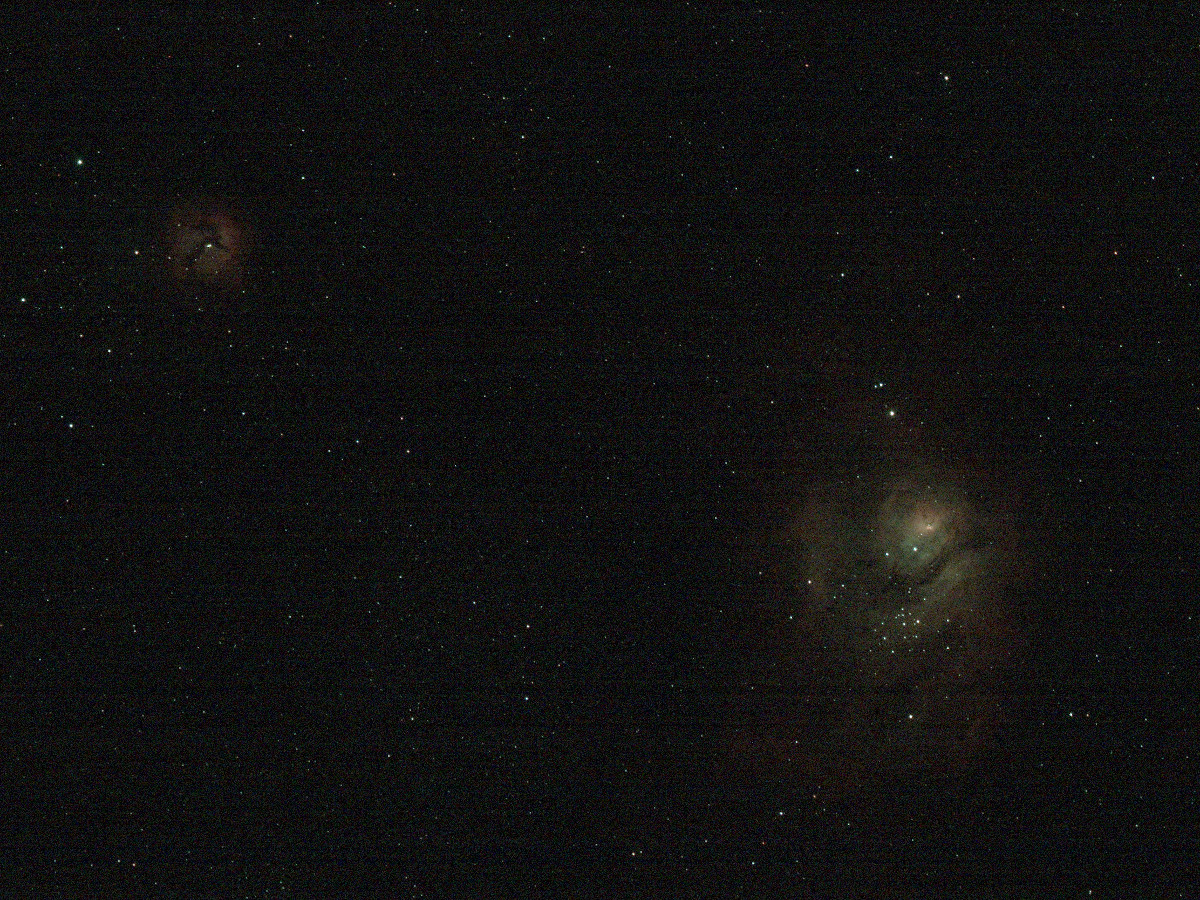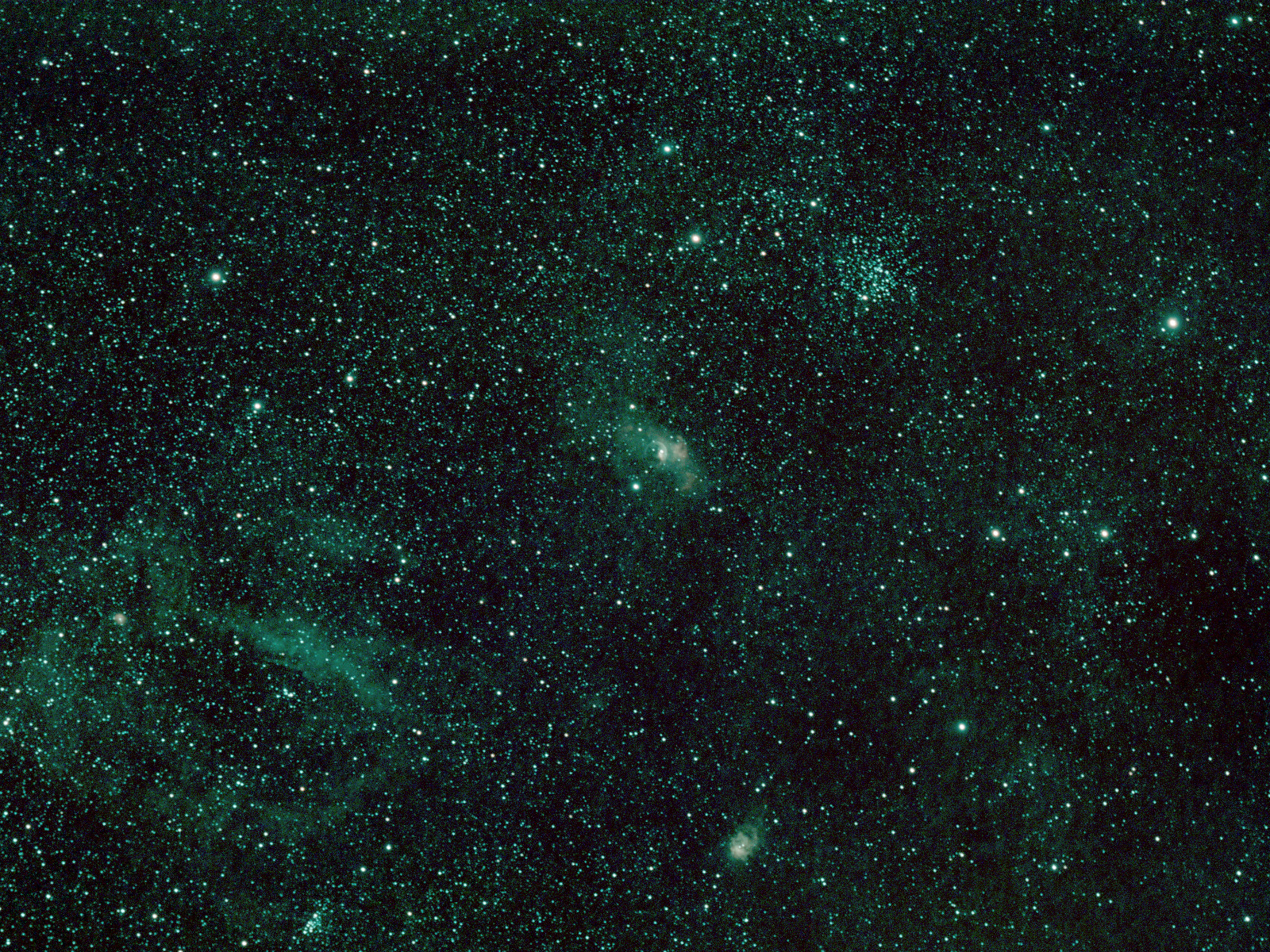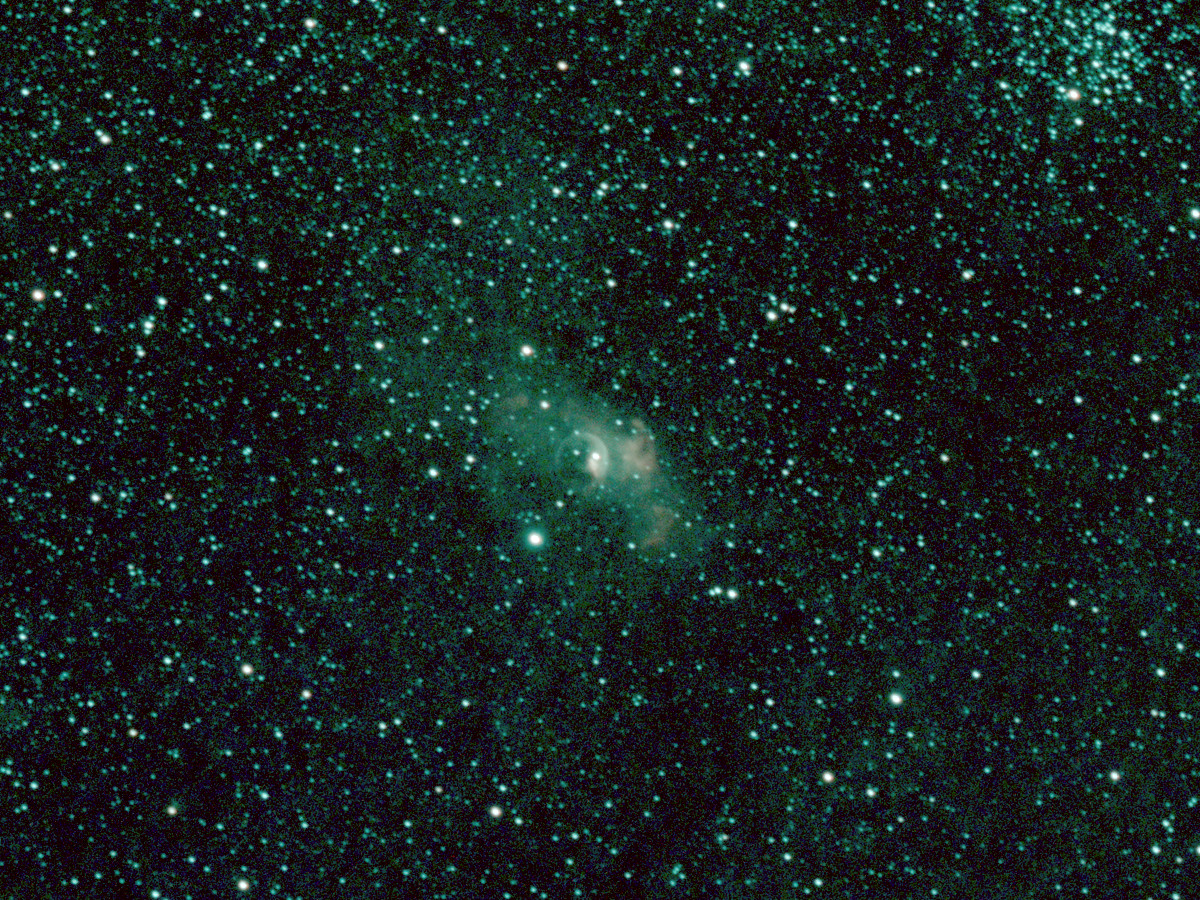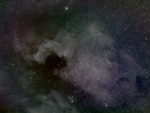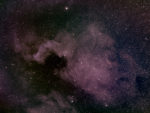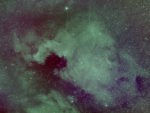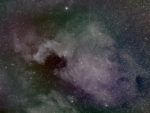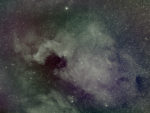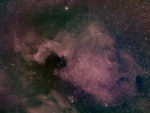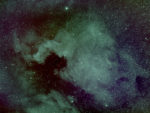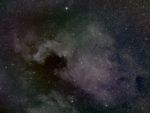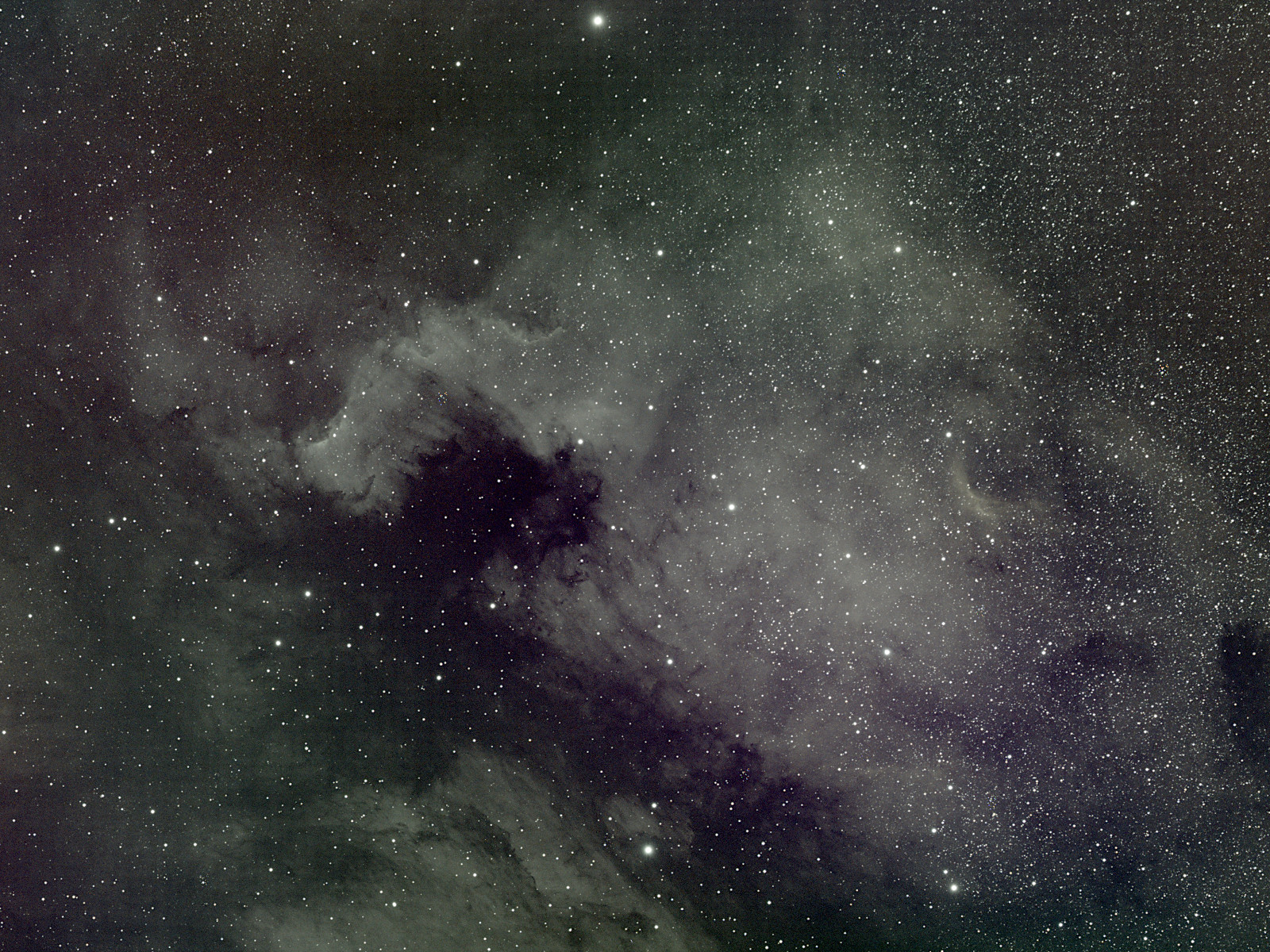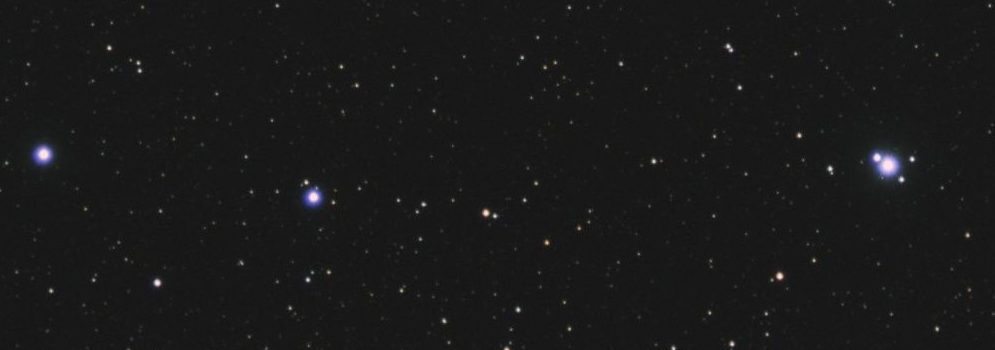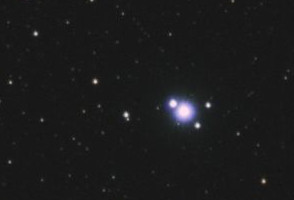There’s a barely discernible distant spiral galaxy, NGC 6207, a little to the left and down.
Eagle Nebula, and the “Pillars of Creation”
I guess it does look like an eagle, sort of. This is the site of the famous “Pillars of Creation” image taken by the Hubble. It’s a bit hard to see; here is a closer crop of the above image;
This one is rotated to match the Hubble image…
A more detailed view of the Lagoon Nebula
Nope, it’s the Lagoon Nebula
This is not the Rosette Nebula, as I first stated. Instead, it is the Lagoon and Triffid Nebulae — got my wires crossed. This image is a 300 second single exposure. The color is somewhat arbitrary…
I also took several 1 second shots trying to frame things; for grins I stacked them and you can see the result below. It’s interesting because to me it looks more like a painting than a photograph. But 1 second exposures…
The Bubble Nebula (NGC 7635)
NGC 7635 is actually a rather small object, less than a quarter degree across. My imaging setup has a field of view of 4×2.72 degrees, and the object is a little above the center. The open cluster in the upper right quadrant is M52.
Below is a closer crop of the above image, showing the perfectly circular “bubble” in the center.
As counterpoint, here’s an exquisite image from the Hubble.
This image is a stack of about 30 10 minute exposures, taken over two nights.
North American Nebula, processed 8 different ways
This is the same data (27 exposures, 3 minutes each) as in the previous post. Four different ways of combining the exposures, and two different methods of removing background coloration (an overwhelming green from the light pollution filter I was using) from the resulting image.
I think the second one (“integration-ABE1-“) is best, but I was a bit slapdash in preparing the images for posting, so that may be an issue…
Colorless North American Nebula
Veil Nebula
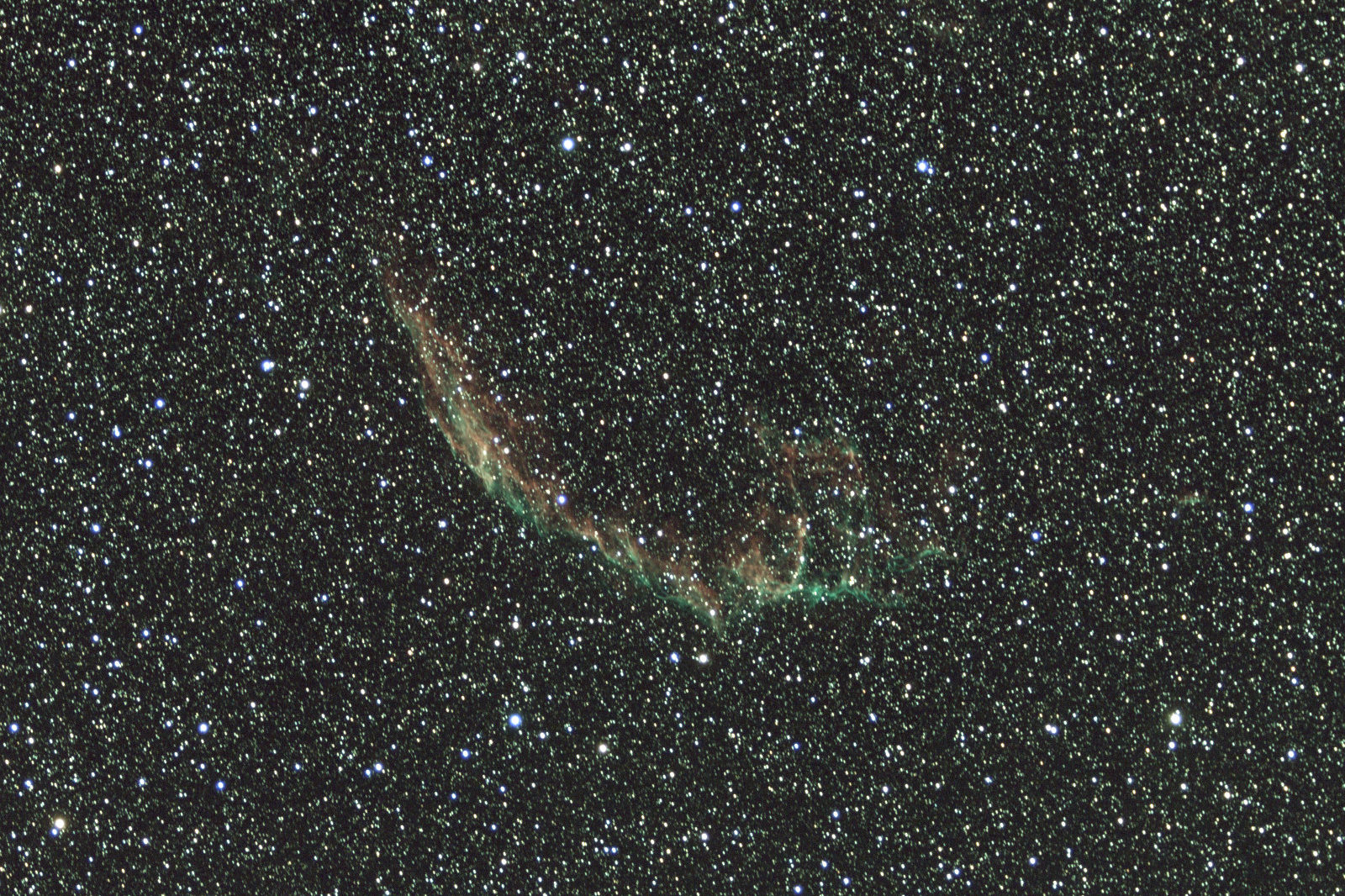
It is really much dimmer than this image would indicate. I boosted the contrast and brightness a great deal. The Veil Nebula is another chestnut image…
Update: Slightly better version of the photo, rotated to match the Wikipedia article on the Veil Nebula, which has some stunning images. This is NGC6992, or the “Eastern Veil”. Weather permitting, I will try to image the rest of it soon. (Cygnus is actually not quite in the best position for me now.)
M57, Ring Nebula
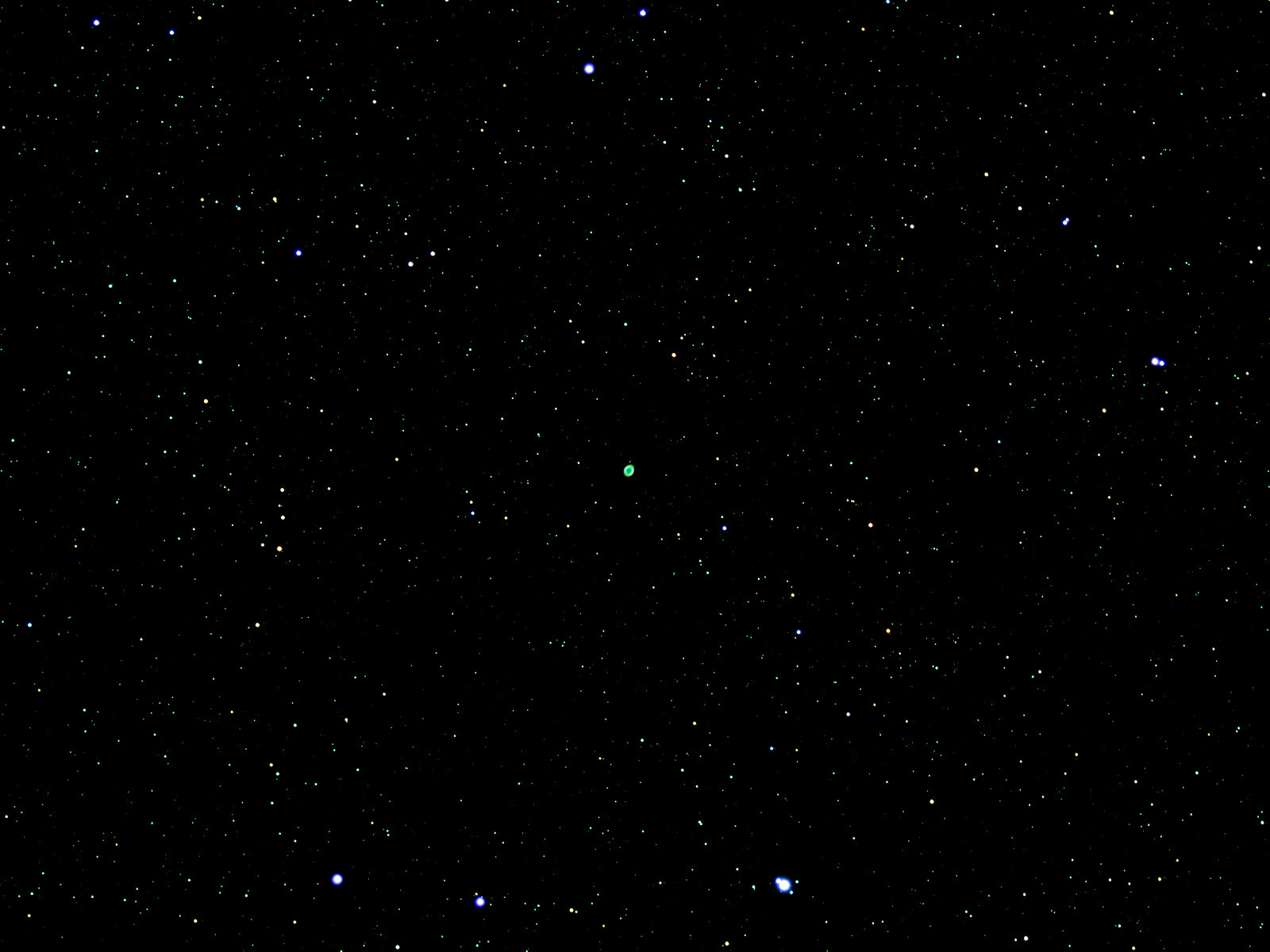
(If you click on the image to expand to full size, the ring will become more clear.) Constellation Lyra.
The rightmost of the three bright stars along the bottom edge is Beta Lyrae, an eclipsing binary system with what seems to me to be a very short period — about 13 days. The next minimum brightness is on June 21, so it’s on the dimmer side at this moment.
I think the smaller of the pair is kissing at the upper left edge. Weather and attention span permitting, I will take another picture in a few days to see if the position has changed. I will be absolutely amazed if my tiny telescope can actually show two stars orbiting each other over a span of a few days!
Further research says: Nope. Wikipedia has a great article about Beta Lyrae, and the eclipsing binary cannot be resolved by optical telescopes. However, there are separable companions of Beta Lyrae that are undoubtedly captured above. Unfortunately, I can’t identify them…
Sadr
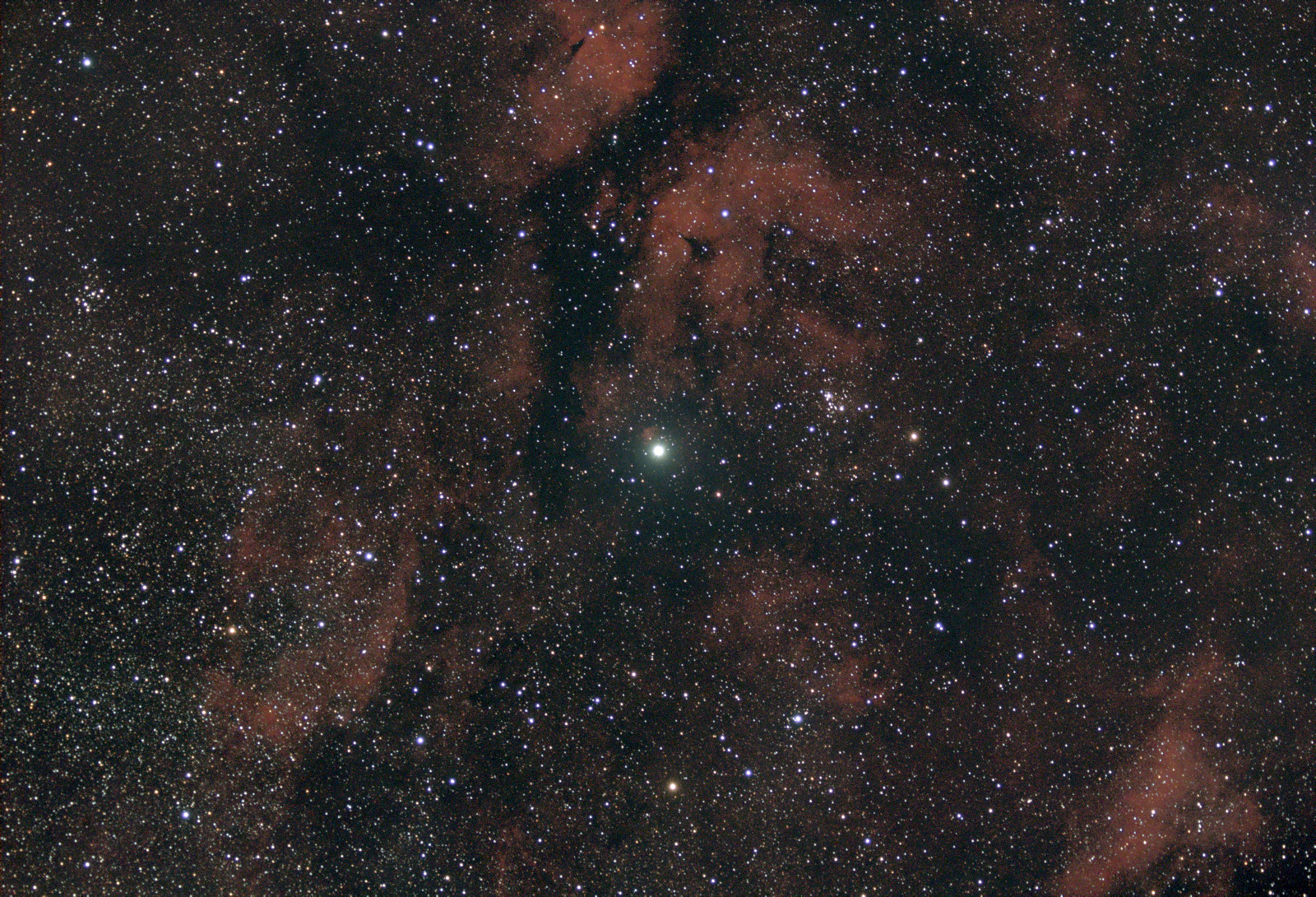
Sadr is at the center of the cross in Cygnus. 600 second single exposure — the sky was very transparent last night.
